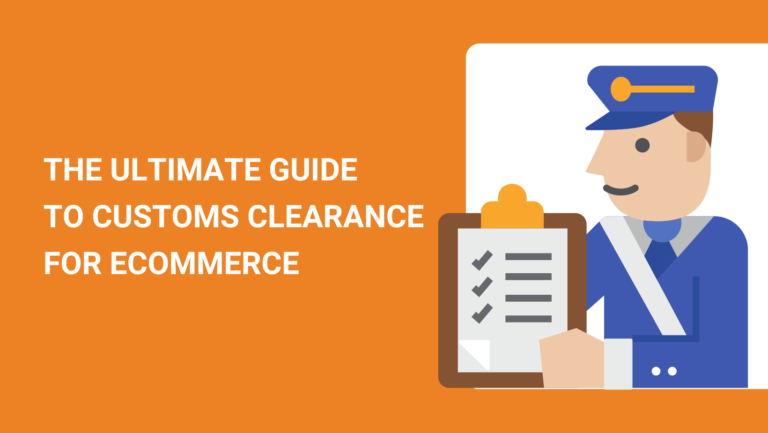The customs clearance process including tax and duty calculation is one of the most challenging parts of international trade.
And, if you’re wondering why the answer is simple – every country has its own set of rules and different relationships with other countries.
And, since international shipments involve import and export, and two parties from two different countries, things can get complicated in terms of duty rates, rules, and paperwork.
So, without further note, let’s dive right in and learn everything you need to know about customs clearance procedures.
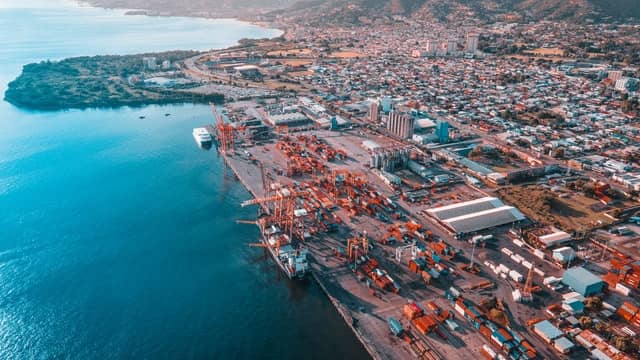
What Is Customs Clearance?
Customs clearance is the process of obtaining permission from the customs authority of a country (government) to export goods out of a territory or import goods in a territory.
So, in international shipments, the cargo has to be cleared first for export in the country of origin and then for import in the importing country.
The US Customs Clearance Process Explained
In the US, import and export customs clearance is under US Customs and Border Protection.
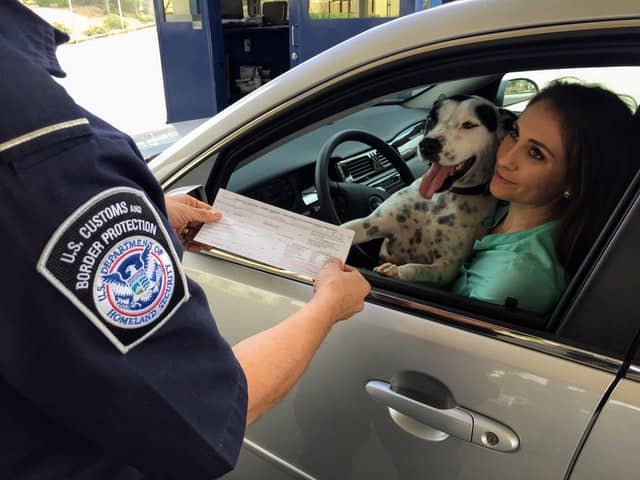
We can divide the customs clearance process into three main steps:
- Paperwork filing and inspection
- Tax and duty calculation and payment
- Clearing and releasing the cargo
Now, let’s explain each of these steps in more detail.
1. Paperwork Filing and Inspection
As soon as your goods arrive at the entry port, a customs officer will inspect and examine your paperwork and make sure they’re complete and compliant.
Some of the most important documents are the commercial invoice, bill of lading (or airway bill), packing list, certificate of origin, letter of credit, purchase order, etc. We’ll talk more about each of these in detail below.
Having complete documentation is the best way to ensure a speedy and smooth customs clearance process.
2. Tax and Duty Calculation and Payment
After they examine your documentation, a customs officer will calculate your taxes and duties if applicable, based on a duty rate that fits your HS code and the value entered in your commercial invoice.
The HS or HTS code is a ten-digit code that classifies your type of product. You can check out the official Harmonized Tariff Schedule website to search and find your product’s HTS code.
Note that in the US, shipments below $800 are not subject to customs clearance.
If your shipment is more, then the customs officer will calculate your taxes and duties based on:
- The value of your shipment (including transport costs)
- The HS code of your product (which determines your import duty rate)
- The Incoterms used for the shipment
3. Clearing and Releasing the Cargo
Once you’ve covered your expenses and everything is good with your documentation, we say that your shipment has been cleared and is going to be released for further transport to the end warehouse.
At this stage, if there were any issues with your shipment, your cargo might get temporarily seized, asking you to submit missing documentation or complete unpaid duties. Or, it can be permanently seized if it’s deemed prohibited or restricted.

Customs Clearance Documents
The documents you will need for the customs clearance process might slightly differ from one country to another. For instance, shipping from China to the UK could be different than shipping from China to the USA.
So, always do your research for your specific country of origin and importing country. However, here are some of the main ones needed:
Commercial Invoice
You will always need a commercial invoice for international shipments. The exporter is the one who provides the commercial invoice. Here is some information you should see in it:
- Tax data of the exporter and importer
- The value of the cargo
- A description of the cargo
- The shipping Incoterm used
- Contact information of the exporter and the importer
- Country of origin
- HTS classification code
- Date of issue
- Port of entry
- Net and gross weight
Bill of Lading or Airway Bill
If you use sea freight, you’ll need a bill of lading. In air freight, that’s equivalent to an airway bill.
You can obtain a bill of lading or a B/L from your freight forwarder. Here are some data typically included in this document:
- Bill of lading conditions
- Shipper’s and consignee’s data
- Data of the contact person to inform upon arrival
- Type of goods
- Quantity or weight of the goods
- Container number
An airway bill is used in air freight and it functions similarly – as a contract for the transport of the cargo that obliges the carrier to deliver it to the agreed location in the agreed amount of time.
Packing List
The packing list contains information such as:
- Date of issue
- Invoice number
- Shipper and consignee data
- Type of packages
- Number of packages
- The content of the packages
- Net and gross weight (per unit and total)
- Delivery and agreed conditions
In simple words, the packing list shows how or in which way your shipment is boxed and packed.

Certificate of Origin
Many international trade laws require a Certificate of Origin to allow goods for export. As the name suggests, the CO’s main purpose is to confirm the goods’ country of origin.
Purchase Order
The purchase order is similar to the commercial invoice, but it’s yet another bureaucratic piece of paper you might need. With a purchase order, you show proof that an order has been placed and received.
Letter of Credit
Sometimes, the customs authority might ask to see a Letter of Credit, also known as L/C. In simple words, the L/C is a guarantee from the bank of the buyer or importer that they will pay for the shipment to the seller or exporter.
CBP Form 7501 Entry Summary
This is the official entry document that needs to be filed upon your goods’ arrival. This is the official US document, and each country has different ones.
For instance, if you’re shipping from China to Canada, you’ll need a Form B3 instead.
Arrival Notice
The exporter or shipper has to provide an arrival notice, informing of the goods’ arrival at the destination port. This document is necessary for the importer to show up and start the customs clearance process – file an entry, submit the documentation, and pay duties and taxes.
Permits, Certificates, and Bonds
Depending on the type of goods you’re importing, you might need to acquire some special permits or certificates. This is often the case for food and pharmaceuticals, where inspections are also often needed.
Additionally, if you’re importing cargo valued at over $2500, you will need to purchase a customs bond. Working with a customs agent or a broker can greatly help in cases like these.
How Long Does Customs Clearance Take?
In most cases in the USA, customs clearance should be cleared in less than 24 hours in the importing country. In fact, in a smooth process, it can take less than 30 minutes. In the UK, international shipments can be cleared in as little as 2 to 3 hours.
However, if customs authorities notice missing documentation or determine that your type of goods needs to be inspected, it can take days or even weeks.
What Are the Custom Clearance Fees?
There is no one-size-fits-all approach when it comes to customs clearance expenses. Instead, they depend on many variables:
- The value of the shipment (in the USA, the de minimis value is $800, under which you don’t need customs clearance)
- The HS code (a ten-digit code that depends on the type of goods you’re shipping)
- The Incoterms used between both parties

So, although these can vary, here are the most common custom clearance expenses you need to plan for:
Import Duty (Customs Duty)
The import duty is a percentage of the total value of your shipment according to the HS code of your product.
For instance, for shipments from China to the USA, the import duty is around 19%, although it can go higher or lower depending on the type of products your import.
Merchandise Processing Fee (MPF)
This is a small fee of 0.3464% of the entered value on your commercial invoice that the US customs collects from all shipments that enter the country.
Harbor Maintenance Fee (HMF)
If you use ocean freight, you will also have to pay HMF which is 0.125% of the value on your commercial invoice.
Customs Broker’s Fee
If you use an independent customs broker to act on your behalf and collect and submit all the paperwork, you’ll need to pay them a fee. The amount depends on the type of services you need.
Inspection Fee
When dealing with international shipments, you have to remember that once in a while, you’ll fall subject to a random inspection.
To keep things fair and unbiased, the US Customs and Border Protection doesn’t need any particular reason or logic for inspecting a shipment, they can just do it randomly.
Unfortunately, that means that you could draw the short straw and have to pay an inspection fee which can go upwards of $300.
Other Fees
Of course, every shipment is different. So, you always have to plan for additional expenses such as storage and detention, fees to regulatory agencies, certificates, permits, fines, etc.
Common Customs Clearance Mistakes
Avoid these common pitfalls that could get your shipment stuck at customs for much longer than needed, or even have it seized permanently:
Choosing the Wrong Customs Broker
The independent customs broker that you choose to work with has to work in your name and favor. They need to be fair and transparent with their fees and explain to you in detail what you’re paying for.
Furthermore, they need to be well-versed in international trade laws and shipments. Asking for referrals is always a good idea.
Undervaluing Your Shipment
Don’t try to undervalue your shipment by changing your commercial invoice amount or hiding the real size and weight. You risk getting caught, resulting in penalties and fines.
Not Planning Enough Time and Money
Sure, most customs clearance processes will go smoothly and be cleared in a few hours. However, you should always allocate extra time and prepare for the worst.
Customs officers are not required to give you any reason or logic behind an inspection – they can simply perform random inspections.
For you (the importer), this means a delay of several days or weeks in worst-case scenarios and inspection fees which you have to cover also.
Selecting the Wrong HS Code
The key to choosing the right HS code for your product is understanding your product well enough to be able to classify it.
Selecting the wrong HS code is a mistake that can be repaired by simply submitting an updated entry, but it will still cost you time and nerves.
Importing Prohibited or Restricted Items
Perhaps the greatest mistake you could make as an importer is buying and shipping prohibited or restricted items.
Prohibited items are those like:
- Alcohol
- Drugs
- Military or defense items
- Dog or cat fur
- Firearms
- Gold
- Trademark or copyrighted items

Restricted items are those that require previous approval. For instance:
- Biologicals or medication
- Automobile items
- Ceramic tableware
- Fish, wildlife, and products made from them
- Certain foods
- Fruits and vegetables
- Game and hunting trophies
- Pets
- Plants and seeds
- Soil
- Textile items
Not Understanding Shipping Incoterms
The next mistake importers often make is forgetting to learn about Incoterms. These are international trade contracts that outline the costs and responsibilities of both parties during shipping.
In other words, shipping Incoterms determine the costs and responsibilities that fall on the exporter or seller, and on the importer or buyer.
So, as an importer, you need to understand at least the basic incoterms such as EXW or FOB since they also affect your expenses.
An Incomplete Commercial Invoice
Last but not least, we have the problem of an incomplete commercial invoice. If the commercial invoice is missing data, contact information, is in the wrong language, or has a wrong HS code, you will have to resubmit your entry, causing delays.
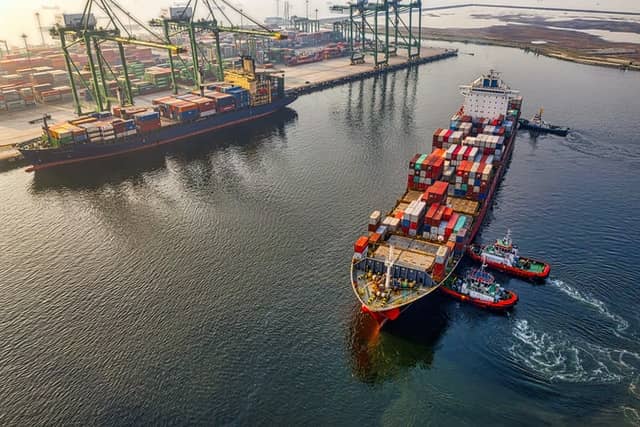
FAQs about Customs Clearance
Now, let’s look at some of the most frequently asked questions on the subject of customs clearance and the process of import and export.
Who Is Responsible for Customs Clearance?
Usually, the importer on record (buyer, freight forwarder, customs broker) is responsible for covering the import duties and taxes. However, it all depends on the shipping Incoterms agreed in advance.
For instance, if you use DDP Incoterms (Delivered Duty Paid), the seller provides a door-to-door delivery, including taking care of the customs clearance process and covering the import duty.
However, if you use DDU Incoterms or Delivered Duty Unpaid, the buyer or importer has to cover the duties and taxes.
So, if you are wondering whether to choose DDP or DDU Incoterms, note that DDP entails fewer expenses for the importer.
When Should You File the Customs Clearance Paperwork?
For informal entries valued at less than $2500, you can file your paperwork on the spot, as soon as your goods arrive.
If you can receive the cargo and go to the port, you can do it personally by submitting the required paperwork. If not, you can authorize your carrier, freight forwarder, or an independent customs agent to do it for you.
For formal entries valued at more than $2500, things are more complex. According to the CBP:
“No more than a week before the expected arrival of your goods in port, or no later than 10 days after arrival, fill out CBP form 5106 (Request for Importer Number, or Notification of Importer Number), 7501 (Entry Summary) and Release Document. Purchase a Customs bond (or be prepared to post cash in lieu of bond). Bring the paperwork and bond to the CBP port, entry branch, and ask an entry specialist to review your completed forms.”
What Is the Role of a Customs Broker?
The main role of an independent customs broker is to facilitate the customs clearance process and help with imports and exports. They are well-versed in international trade laws and know the best terms and conditions for your shipments.
Working with a customs broker is important, especially for international shipments valued at over $2500. In cases like these, the entire customs clearance process becomes more complex.
What Happens If My Package Does Not Clear Customs?
As soon as your shipment arrives, the carrier has to inform the importer on record so that they can start the customs clearance process. Note that in the US, the CBP will not inform you of your cargo’s arrival, this is solely your carrier’s responsibility.
If the importer fails to initiate the customs clearance procedure and submit an entry within 15 days, the shipment will be stored and the importer has to cover the warehouse costs.
If after six months, the importer still doesn’t submit their customs clearance documentation, the products may be sold at an auction.
On the other hand, if you have initiated the customs clearance process yet your shipment is still stuck, there can be three main problems:
- Unpaid duties and taxes – pay them and your shipment will be cleared and released.
- Missing documentation – submit the necessary paperwork to have your products cleared.
- Prohibited or restricted items – some types of products are prohibited or restricted for import, so check with your customs agent.

What Causes Customs Clearance Delays?
Some of the most common causes of customs clearance delays are:
- Incorrect HS product code
- Vague, incomprehensible, or inaccurate product description
- Incomplete documentation and paperwork
- Missing data in the commercial invoice
- Incorrect value or quantity (often to avoid higher taxes and meet the de minimis amounts)
- Seasonal holidays (New Year, Christmas, Chinese New Year, etc.)
- External influences such as weather conditions causing shipment delays
- Poorly packaged products (refer to this guide to different types of packaging for help)
- Currency is not specified
- Unpaid taxes or duties
- Importing high-risk products (knives, guns, alcohol, pharmaceutical products, etc.)
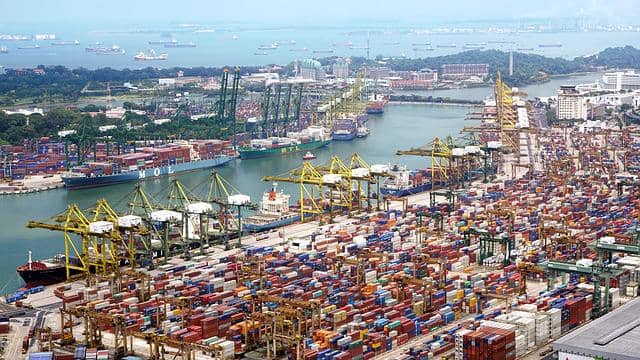
To Sum Up
We sincerely hope that we’ve managed to help you understand the basics of the customs clearance process, import, and export.
Note that the above rules are mainly for import in the USA. Importing in the EU or other countries might be slightly different. So, always check the national rules and regulations of both the export and import countries beforehand.
If you’re considering buying in bulk from China and need help with product sourcing and customs clearance, get a free quote, and let us show you what we can do for you risk-free.
